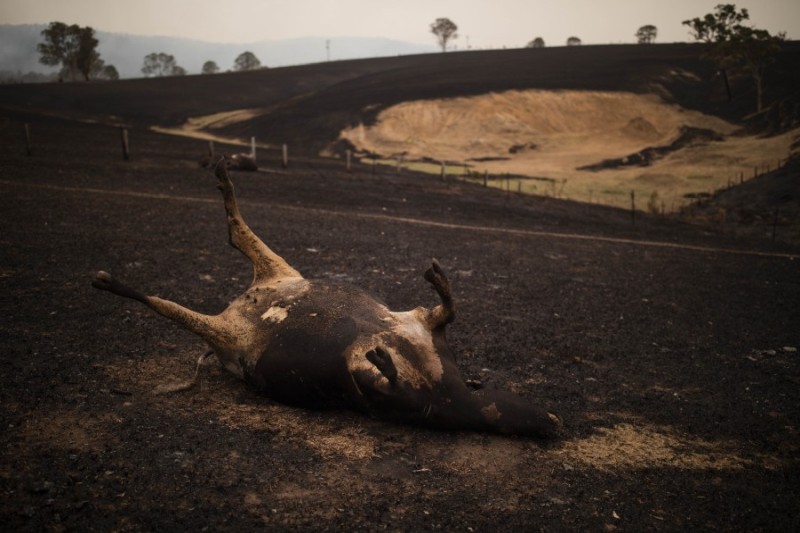
More than 100,000 sheep and cattle are thought to have perished in the ongoing bushfire emergency impacting Australia.
Extreme bushfires have blackened landscapes and destroyed an area about the size of the island of Ireland, official figures show.
It comes as Australia has just recorded its hottest, driest year since records began.
Many Australian farmers have been impacted - losing homes, livestock and infrastructure, according to the National Farmers' Federation (NFF).
The most impacted sectors include the dairy sector, where large parts of the New South Wales south coast, and north eastern Victoria were impacted and continue to be under threat.
There are also reported losses in the beef and sheep sectors in upper Murray region of Victoria, lower Riverina and Snowy Mountains areas.
Gut wrenching scene from New South Wales of dead animals along the roadside. The bushfires are a climate change-fueled ecological disaster. We should not look away pic.twitter.com/RLLN0tk9lT
— Brian Kahn (@blkahn) January 5, 2020
The Federal Agriculture Minister Bridget McKenzie told broadcaster ABC that livestock losses will be over 100,000.
She said her team is working with State governments to gain a better picture of the catastrophe.
“When we are talking to state farming organisations, they are saying first and foremost we need to get fodder into these herds, and they also need clear water.
“The second thing they are asking is around access back to property and the fencing recovery task … and mental health issues that will be ongoing,” she said.
Assessment of livestock losses and injury from the fires is devastating. Vic, NSW, SA, Qld, WA and national contacts for vet advice, emergency fodder and water, stock relocation, and mental health support here https://t.co/flhmNeDRuF or https://t.co/RmrA9pn2jC.
— Senator Bridget McKenzie (@senbmckenzie) January 7, 2020
NFF president Fiona Simson paid tribute to the emergency service personnel, including the Rural Fire Service (RFS) brigades across the country.
The RFS are helping farmers and rural communities protect homes, livestock and property.
“Many of the volunteers are of course farmers themselves and the commitment, service and courage they have demonstrated makes Australians extremely proud that we have men and women like this in our community,” she said.
Farmers will now require immediate assistance from governments of all levels to help keep livestock alive.
Morning Twitter! Yesterday @ScottMorrisonMP announced $2bn for bushfire recovery. We want your ideas for how this should be spent! Drop us a reply with how this could be used to rebuild your farm or town. ???? pic.twitter.com/m4Ix4PkM5W
— National Farmers' Federation (@NationalFarmers) January 6, 2020
“Already we have seen the devastation caused by the current severe drought and now we have catastrophic bushfires to deal with, so farmers and rural and regional communities simply must have all of the assistance they need.
“In the first instance we need to ensure we have adequate feed and water available and shelter areas for livestock and other farm animals such as horses,” she said.
